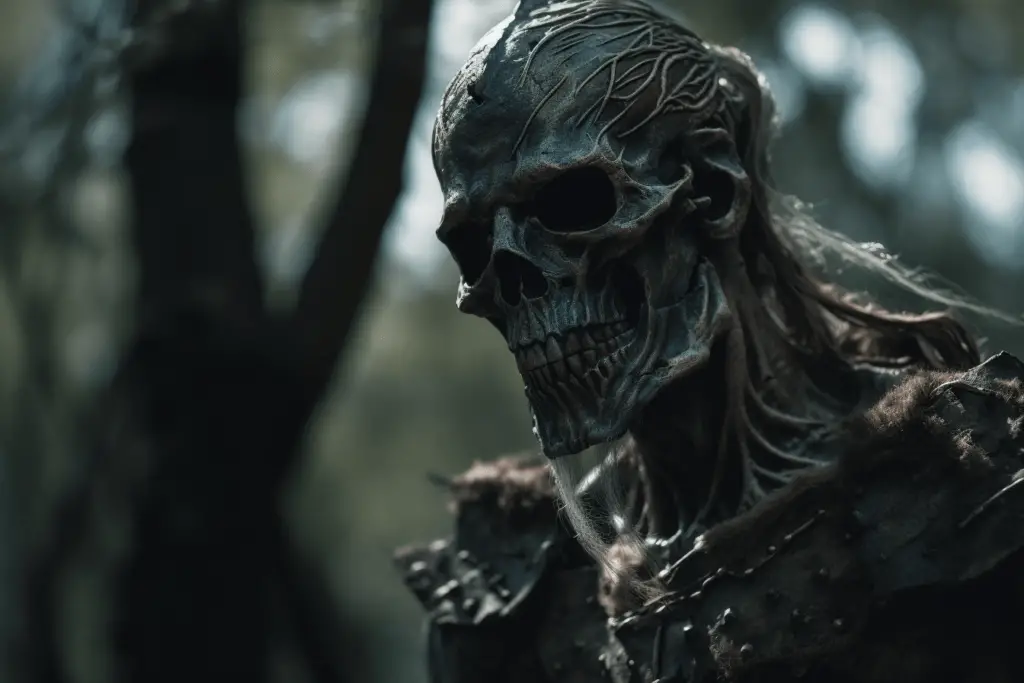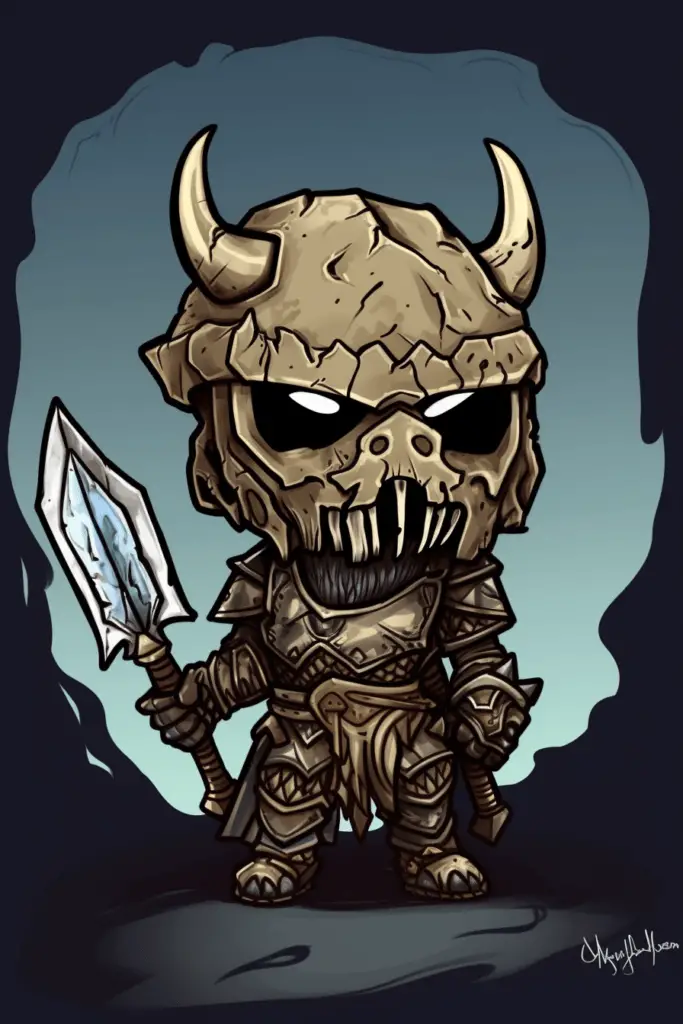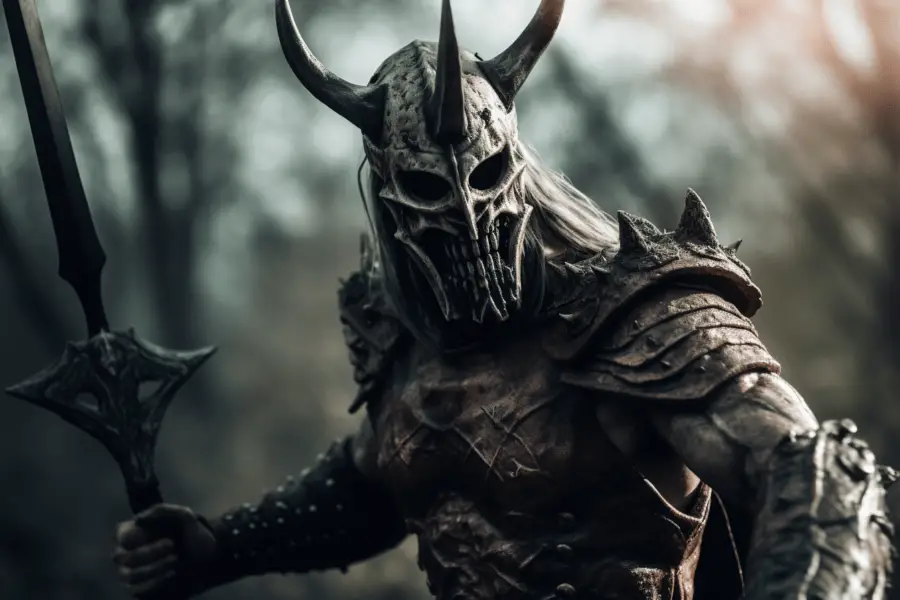Share the Lore!
By: Alex Postrado
A Terror Even the Vikings Feared
No. Vikings were not the long-haired, barbaric he-men that modern pop culture has long been feeding us.
At the very least, not all of them were.
But they were indeed brave Scandinavian seafaring warriors, notorious for their raiding and pirating habits.
This was probably the factor that ignited the notion of Vikings, being the epitome of masculinity.
Yet, despite their daring personas, historians and scholars alike believe that there is a certain type of creature that still awakens an overwhelming fear in the Nordic pirates of the Middle Ages.
The draugr.
An undead man? A ghost? A revenant? The lore says it is all of that.
Rising from their graves to terrorize the living and threaten the sanity of people from the northern part of Europe.
What is a Draugr?
The lore of the draugr comes straight out of the ancient Icelandic Sagas.
The name originally means “a ghost” or “a spirit“.
But, as it spread across other Scandinavian literature and folklore, its form and definition likewise broadened — the reason why we now have the acquired terms draug, draugur, dreygur, dréagr, and draugen, all of which are used to refer to the undead monster of Norse origins.
In plural form, draugr would be spelled as draugar.
They are also sometimes called aptrganga — literally meaning, “again-walker“.
When E. Magnússon and W. Morris published their 1869 translation of one of the oldest and best-known draugr stories, known as Grettis saga, the draugr was referred to as a “barrow-wight” — a type of draugr called haugbúi or, in English, “barrow-dweller“.
According to Norse legends, a haugbúi lives within the comfort — otherwise, discomfort — of their tomb either because they are unable to leave or they just prefer to stay in it.
This type of undead is usually harmless unless someone tries to trespass upon their territory; that is when they attack!
This is because draugar — even the grave-staying haugbúi — are believed to be stashing treasure inside their burial mounds.
When a haugbúi perceives a threat nearby, they can employ their vast supernatural abilities to eliminate it or to ward it off.
But it is an entirely different story when it comes to the roaming draugr.
Their main motivation for rising from the grave ranges from jealousy, greed, and from time to time, bloodthirst.
Draugar will wander around, inflicting harm on anyone and anything that they cross paths with.
They could kill humans just by looking at them and cursing them with bad luck.
And they could also shapeshift into any form they please — sometimes transforming into a gargantuan terror to easily crush anyone that tries to stand in their way.
Several stories have even compared draugar with living wizards and witches due to their numerous other powers, including: bringing disease upon villages, controlling the weather, creating temporary darkness during the day, entering the dreams of the living, seeing into the future, driving people insane, and escaping from their graves as a wisp of smoke.
All of this makes the roaming undead, all the more terrifying — with the worst part being, draugar rarely kill their victims right away.
These reanimated corpses find delight in suffering. To them, the more trauma and pain, the better.
Unfortunately, humans aren’t the only ones at risk of the murderous ways of the draugr.
These Norse monsters are also known for devastating livestock and other animals by chasing them to death or sitting on top of them just until they are at the brink of suffocation, only to do it again and again.

Connection to Vampires?
Draugar and vampires have long been thought to be similar in more than a few ways.
One of which is their nocturnal nature.
Like vampires, draugar are night hunters — though, there is no known text, saying that they are vulnerable to sunlight.
Both of these revenant monsters are also believed to pay visits in order to put an end to an unfinished business — making them quite interesting subjects for people whose views differ on whether supernatural reanimation retains the personality and memories of the being-in-question.

However, out of all of their similarities, it is perhaps the shared transmissibility — which is the hallmark of vampirism — that makes the most sense for a lot of scholars, like literary anthologist Andrew Lang.
Just like the victims of the famous bloodsuckers, victims of draugar are believed to turn into draugar, themselves — which, in some stories, results in a long “chain of contagion” among people.
In spite of that, others still reject the parallelism attributed to draugar and vampires — even saying that it is “unnecessary” since the modern zombie actually bears more resemblance to the Nordic monster.
HOW A DRAUGR IS CREATED
Author Ármann Jakobsson says that “most medieval Icelandic ghosts are evil or marginal people“.
This adds an important layer into the lore of the draugr — implying that, while some are cursed to become an undead, in a lot of cases, draugar are walking remnants of people who died after a life full of greed or spitefulness.
If viewed in this light, they may be quite similar to Oni of Japanese lore. Yet, Oni are typically depicted as bright-colored demons, while draugar are mostly pitch-black, pale white, or death-blue.
It is said that a key sign that a deceased person will turn into a draugr is when their corpse is suddenly found standing upright or in a sitting position.
In order to prevent that, Jakobsson notes that someone has to break the corpse’s posture.
Just be careful, though! Those who would try to do that can unknowingly be doomed by the draugr’s evil eye.

Coping with the Fear of the Draugr
Similar to countless other ancient civilizations, the Norse also valued the concept of life after death.
That played a significant part in their custom and belief — even stretching to their folktales and oral tradition.
And in some ways, the lore of the draugr was a fruit of that.
Medieval-era Scandinavians believed that even after the passing of an individual, their body could still move — more so, harm — other people.
That is likely the reason why there are is archeological evidence of damaged weapons buried along with human remains.
Other believers of the lore also placed large boulders above graves — at times, even directly atop the corpses to immobilize them.
Of course, these only account for two of the ways people could prevent a draugr from attacking.
There are still several allegedly effective practices, such as making use of iron weapons; putting heaps of straws or twigs inside a dead person’s clothes; tying the big toes together and skewering the soles with needles to keep the deceased from getting up; lifting and lowering the coffin in different directions to confuse a potential draugr; properly bricking up tombs; and making special holes in walls to carry the corpse through, feet-first, in an attempt to avert a return.
Though, it is said that the best way to completely finish off a draugr is to cut off the head, burn the body, and dump the remaining ashes in the middle of the sea.
But, since draugar are generally considered to only be byproducts of the past Nordic culture, when all is said and done, it was — perhaps — not really the monster that ancient people were trying to get rid of.
For all we know, it could be what draugar reminded them of:
Death, wasting, and their culture’s perennial kinship with those who have departed.
References:
Draugr - Vampedia Draugr - Myths and Folklore The Draugr - Astonishing Legends Draugr - Vikings Feared This Ugly Living Dead With Prophetic Visions The Norse Draugar – First Zombies of Europe?
